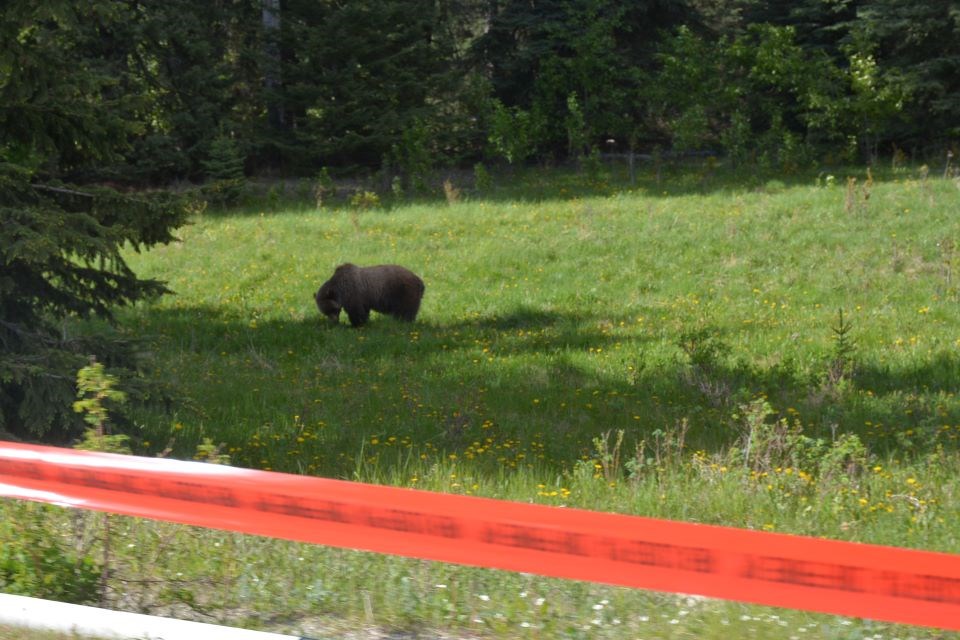Pylons are part of Parks Canada’s anti-wildlife jam toolkit.
They aren’t new tools either, says Dave Argument, resource conservation manager with Jasper National Park, only ones that come out of the toolbox when situations warrant.
In areas where wildlife frequently is seen close to highways, the Human-Wildlife Coexistence Team will place a series of pylons where motorists are not allowed to stop. Last Thursday, the team was out on Highway 93 next to where a grizzly bear was openly feeding in a clearing where there is a small patch of good forage.
“That was new and temporary, but the technique is not new,” Arguments said.
“We have been using it for several years at least, but in a non-permanent fashion in spot problem areas.”
The pylon method helps there also because the location is close to the bridge over the Miette River. The roadway narrows for this passing, and the shoulders thin out as well.
A few years ago, for example, Parks had an ongoing issue with a pair of courting grizzly bears outside of town but in plain view of the highway. They were there for several days in the spring, leading to what is commonly referred to as a bear jam: the significant traffic snarl-ups that residents and visitors alike are familiar with.
“There’s a motorist and visitor safety issue there with people driving poorly and behaving badly on the road, of course, but it also presents hazards to the wildlife involved,” Argument said.
“Typically, when wildlife are exposed to that kind of sustained attention and become so habituated, it often will lead to negative outcomes for the wildlife, either being struck on the road or getting into other sorts of problems.”
This isn’t the only spot where the pylons get put into service. Motorists must always be attentive to the conditions, which could mean unexpected warnings and other directions.
“It's something that we keep in our pocket,” Argument said.
“We've got the signage ready to deploy, whether it's electric signs or temporary pylons, depending on the issue. It's something that we use fairly often: a few times a year in different spots.”
Argument reminded the public that safety on the highway is everybody's responsibility. He also offered a reminder about the other tool in the kit that doesn’t always get used: the law.
“Everybody that is operating motor vehicle needs to be aware of the rules of the road, and from a strictly legal perspective, stopping on the highway or stopping on the shoulder for non-emergency purposes is actually not legal at any location on the highway,” he said.
It is the driver’s responsibility to choose carefully where they pull over. Ideally, that would be in areas where there is a proper pull-out so that they can come to a full and complete stop safely off the driving surface.
It is everyone’s responsibility to maintain safe distances from wildlife. That means a minimum of 30 metres (three bus lengths) away from elk, deer and moose, and a minimum of 100 metres (10 bus lengths) away from bears and other carnivores. That is for the safety of the public and for the animals as well.
“Every year we do certainly have people that get over their vehicles too close to wildlife and cause a little bit of a concern for us in terms of habituating wildlife, in terms of actual contact encounters, or human-wildlife encounters that are hazardous in nature,” Argument said.
Argument reiterated that bears are often exposed to intense amounts of attention and pressure from roadside visitors. This can lead to habituation, which exacerbates the problem of maintaining safety for them and for people.
“We really are trying to push that message that we need to give wildlife space: space to be wild and space to do their business.”



